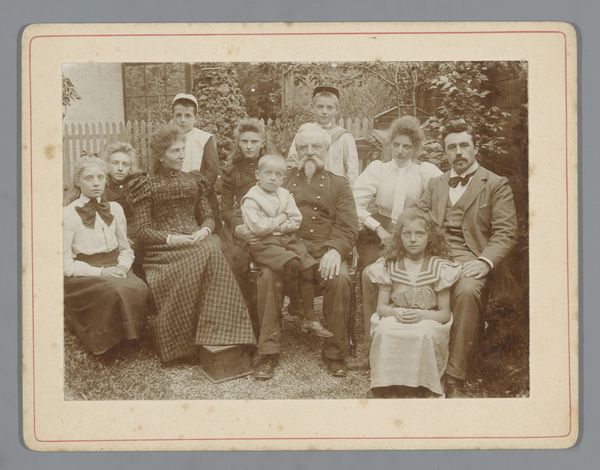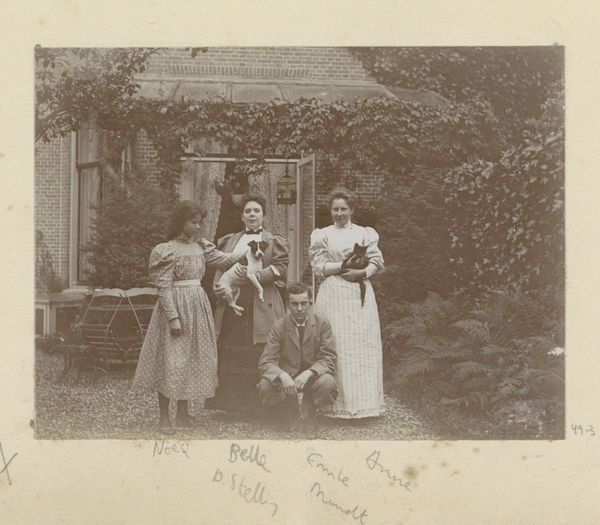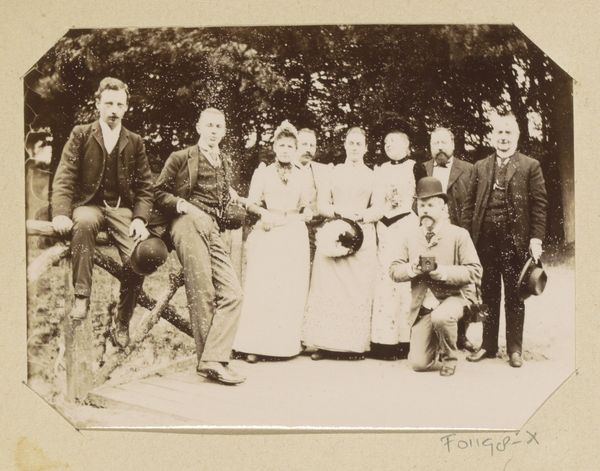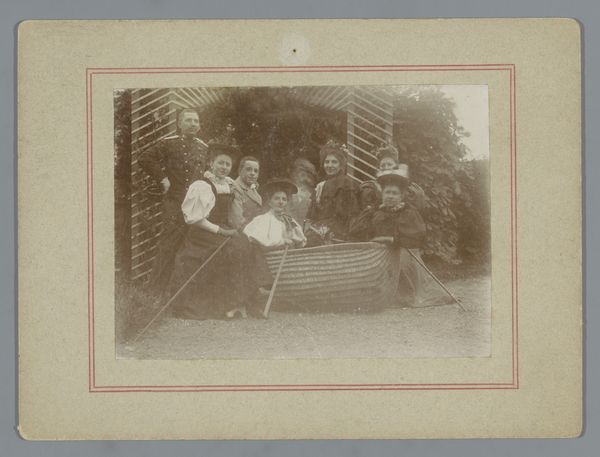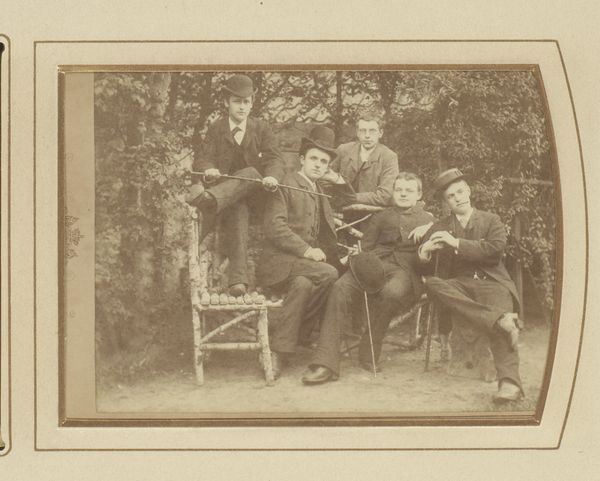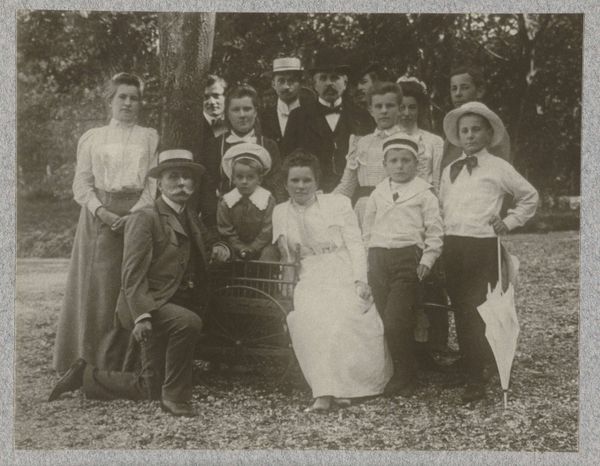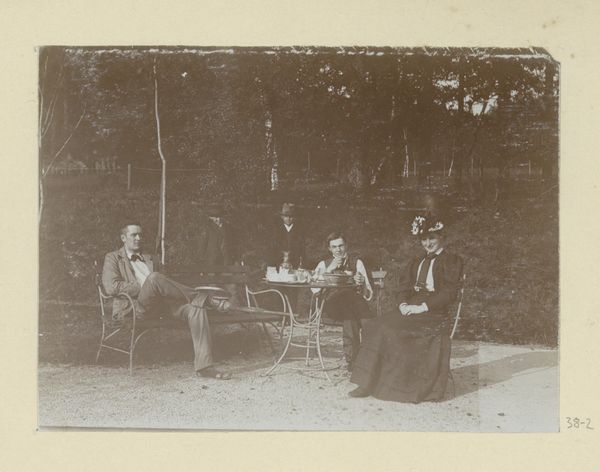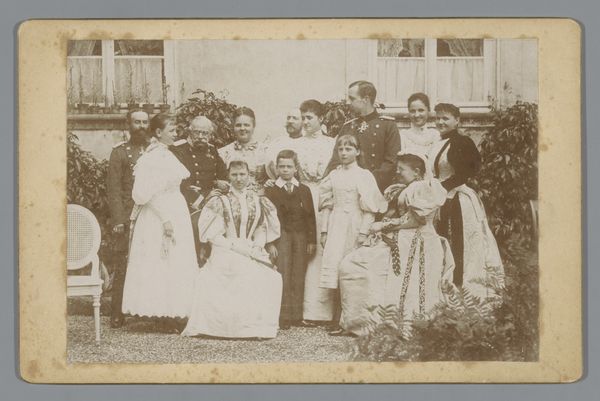
Groepsportret van de familie Hoogendijk, Johanna en Han van der Kop in een tuin te Schoonhoven c. 1905 - 1910
0:00
0:00
willemcarelvanderkop
Rijksmuseum
photography
#
portrait
#
photography
#
group-portraits
#
genre-painting
#
realism
Dimensions: height 83 mm, width 115 mm
Copyright: Rijks Museum: Open Domain
Editor: This photograph, "Groepsportret van de familie Hoogendijk, Johanna en Han van der Kop in een tuin te Schoonhoven," was taken around 1905-1910. It's a sepia-toned family portrait from the Rijksmuseum collection, made with the photography medium, naturally. There's something very posed about the image. What stands out to you, in terms of what we can infer from its construction? Curator: The sepia tone is key, isn't it? It wasn't simply an aesthetic choice but indicative of specific chemical processes and materials readily available at the time. Consider the material reality: each family member probably paid for the portrait and selected garments, reflecting status and aspirations within a local economy. How much did the dyes cost, for example, and how was that labor divided at the family's presumed home or business? Editor: That's an interesting way to put it - looking at cost. It makes me consider the materiality of those ornate dresses. All those buttons and clasps - you almost never see those these days. What can the act of producing such an item indicate in those times? Curator: Exactly! This photograph is not just about representation but about the economic realities underpinning it. Each piece of clothing signifies resources, labor, and skill. The contrast between the simple dresses worn by what appears to be a serving person versus the elder children’s outfits or elder’s garb, speaks volumes about labor, gendered roles, class divisions and values of this specific time and place, wouldn’t you say? Editor: Yes, that's an interesting reading. I'd been focused on who was who. Seeing how class distinctions and divisions of labour might intersect brings it all to life. Curator: Precisely, and through the materiality we find those relationships emerge - it reframes our understanding entirely, shifting from simple visual appreciation to understanding a moment shaped by real material conditions.
Comments
No comments
Be the first to comment and join the conversation on the ultimate creative platform.


